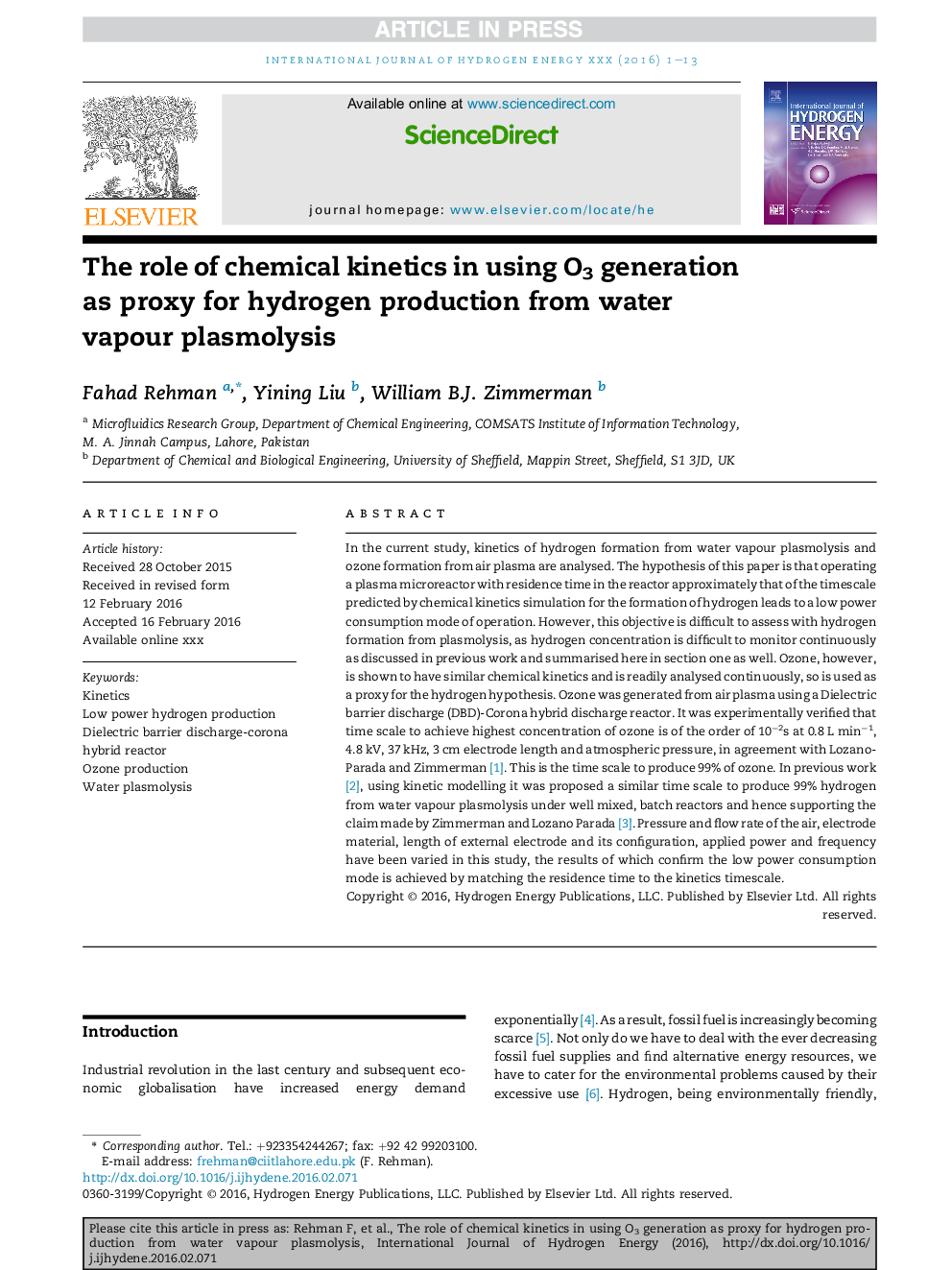| Article ID | Journal | Published Year | Pages | File Type |
|---|---|---|---|---|
| 7711036 | International Journal of Hydrogen Energy | 2016 | 13 Pages |
Abstract
In the current study, kinetics of hydrogen formation from water vapour plasmolysis and ozone formation from air plasma are analysed. The hypothesis of this paper is that operating a plasma microreactor with residence time in the reactor approximately that of the timescale predicted by chemical kinetics simulation for the formation of hydrogen leads to a low power consumption mode of operation. However, this objective is difficult to assess with hydrogen formation from plasmolysis, as hydrogen concentration is difficult to monitor continuously as discussed in previous work and summarised here in section one as well. Ozone, however, is shown to have similar chemical kinetics and is readily analysed continuously, so is used as a proxy for the hydrogen hypothesis. Ozone was generated from air plasma using a Dielectric barrier discharge (DBD)-Corona hybrid discharge reactor. It was experimentally verified that time scale to achieve highest concentration of ozone is of the order of 10â2s at 0.8Â LÂ minâ1, 4.8Â kV, 37Â kHz, 3Â cm electrode length and atmospheric pressure, in agreement with Lozano-Parada and Zimmerman [1]. This is the time scale to produce 99% of ozone. In previous work [2], using kinetic modelling it was proposed a similar time scale to produce 99% hydrogen from water vapour plasmolysis under well mixed, batch reactors and hence supporting the claim made by Zimmerman and Lozano Parada [3]. Pressure and flow rate of the air, electrode material, length of external electrode and its configuration, applied power and frequency have been varied in this study, the results of which confirm the low power consumption mode is achieved by matching the residence time to the kinetics timescale.
Keywords
Related Topics
Physical Sciences and Engineering
Chemistry
Electrochemistry
Authors
Fahad Rehman, Yining Liu, William B.J. Zimmerman,
